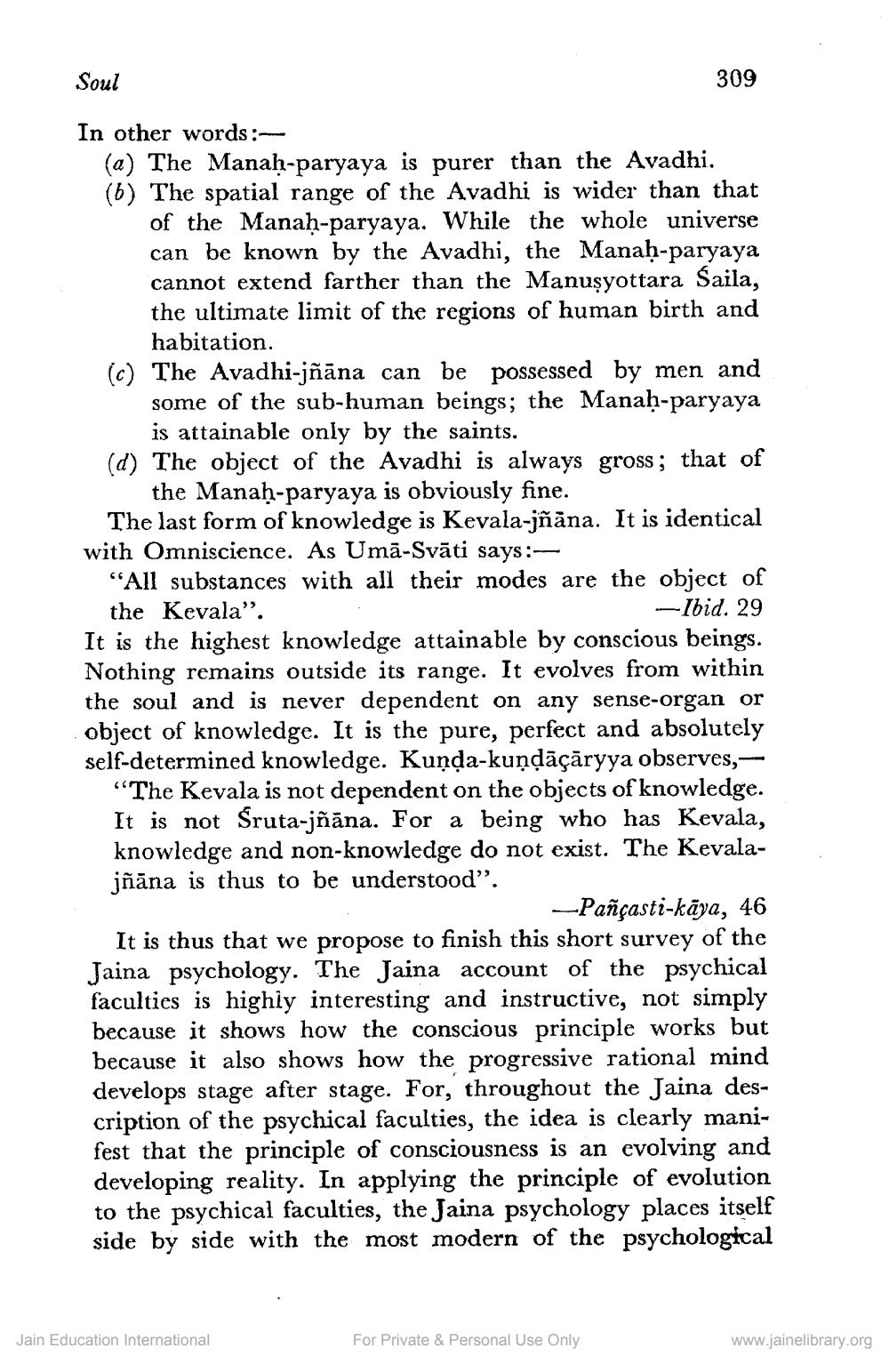________________
Soul
309
(c)
In other words:
(a) The Manah-paryaya is purer than the Avadhi. (b) The spatial range of the Avadhi is wider than that
of the Manaḥ-paryaya. While the whole universe can be known by the Avadhi, the Manah-paryaya cannot extend farther than the Manuşyottara Saila, the ultimate limit of the regions of human birth and habitation. The Avadhi-jñāna can be possessed by men and some of the sub-human beings; the Manah-paryaya
is attainable only by the saints. (d) The object of the Avadhi is always gross; that of
the Manaḥ-paryaya is obviously fine. The last form of knowledge is Kevala-jñāna. It is identical with Omniscience. As Umā-Svāti says:
“All substances with all their modes are the object of the Kevala".
-Ibid. 29 It is the highest knowledge attainable by conscious beings. Nothing remains outside its range. It evolves from within the soul and is never dependent on any sense-organ or object of knowledge. It is the pure, perfect and absolutely self-determined knowledge. Kunda-kuņdācāryya observes,--
"The Kevala is not dependent on the objects of knowledge. It is not Śruta-jñāna. For a being who has Kevala, knowledge and non-knowledge do not exist. The Kevalajñāna is thus to be understood”.
–Pañcasti-kāya, 46 It is thus that we propose to finish this short survey of the Jaina psychology. The Jaina account of the psychical faculties is highly interesting and instructive, not simply because it shows how the conscious principle works but because it also shows how the progressive rational mind develops stage after stage. For, throughout the Jaina description of the psychical faculties, the idea is clearly manifest that the principle of consciousness is an evolving and developing reality. In applying the principle of evolution to the psychical faculties, the Jaina psychology places itself side by side with the most modern of the psychological
Jain Education International
For Private & Personal Use Only
www.jainelibrary.org




